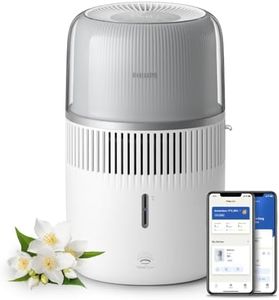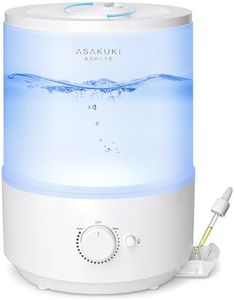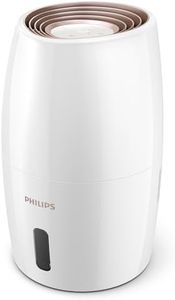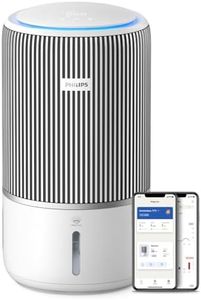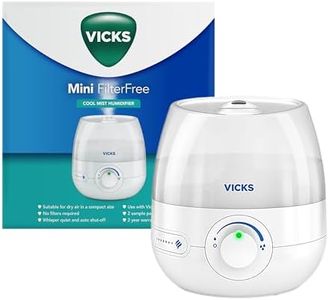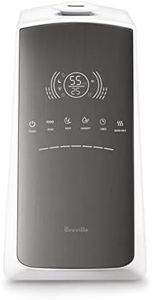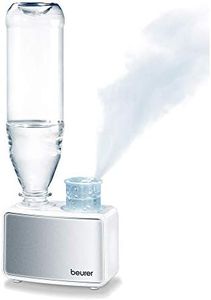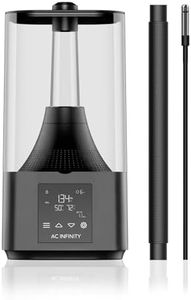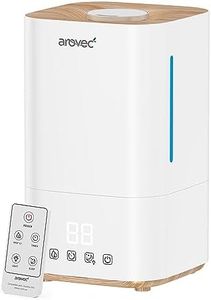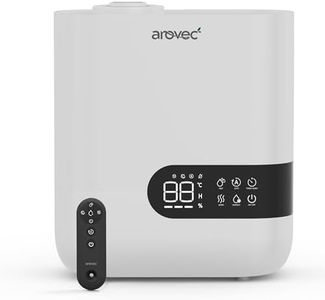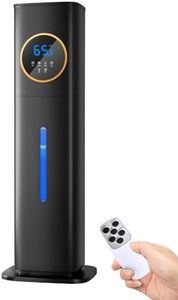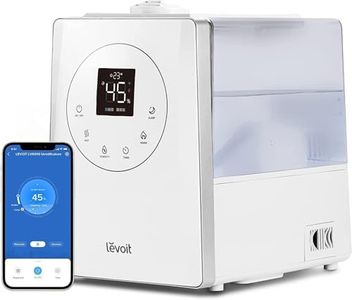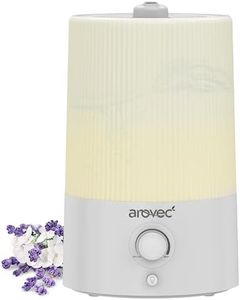We Use CookiesWe use cookies to enhance the security, performance,
functionality and for analytical and promotional activities. By continuing to browse this site you
are agreeing to our privacy policy
10 Best House Humidifiers
From leading brands and best sellers available on the web.Buying Guide for the Best House Humidifiers
Choosing a house humidifier can greatly improve air quality and comfort in your home, especially during dry seasons or in homes with central heating. The right humidifier prevents dryness that can cause irritation in many parts of the body, protects wooden furniture, and maintains an overall healthier environment. The key to picking the perfect one is to understand where and how you want to use it, and then match those needs to the main features and specifications available.Room Coverage AreaRoom coverage area tells you the maximum size of the space the humidifier is able to effectively humidify, usually measured in square feet or meters. This matters because a humidifier that’s too small for a room won’t make a noticeable difference, while one that’s too large may leave things feeling damp or waste energy. Smaller models are good for bedrooms and offices, medium ones are better for living rooms or kitchens, and whole-house models are designed for large spaces or open-plan homes. To choose the right one, measure the area where you want to use the humidifier and select a model that matches or slightly exceeds this space.
Water Tank CapacityWater tank capacity is the amount of water the humidifier can hold at one time, determining how long it can operate before you need to refill it. A small capacity (under 1 liter) usually means more frequent refills, but the device is lightweight and portable, suitable for personal use. Medium tanks (1-3 liters) strike a balance between convenience and size and are good for bedrooms or small living rooms. Large tanks (over 3 liters) provide longer run time—sometimes all day or night—but make the device heavier and bulkier. If you don’t want to refill often, look for bigger tank capacities, especially for larger rooms or overnight use.
Type of Humidifier (Evaporative, Ultrasonic, Steam/Vaporizer)Different humidifiers work using different technologies: evaporative, ultrasonic, and steam vaporizers. Evaporative models use a wick and fan to spread humidity and are efficient and self-regulating. Ultrasonic types use high-frequency vibrations to create mist, often running more quietly and allowing more compact design. Steam vaporizers boil water to release steam and can double as warm mist humidifiers. If you’re sensitive to noise, ultrasonic is usually best. For energy efficiency and low maintenance, consider evaporative models. If you want warm mist to help with colds or allergies, a steam vaporizer might suit you. Think about your priorities—quietness, maintenance, or therapeutic benefits—to guide your decision.
Noise LevelNoise level tells you how much sound the humidifier produces when in operation. This can matter a lot if you’re using it in a bedroom, nursery, or office where quiet is important. Quiet humidifiers typically have ultrasonic technology and produce a soft hum, while evaporative or steam vaporizers can be noisier due to fans or boiling water. If you are a light sleeper or want very little distraction, look for models that advertise low noise or silent operation.
Ease of CleaningHumidifiers need regular cleaning to prevent mold and bacteria growth. Ease of cleaning refers to how simple it is to disassemble, reach inside parts, and clean thoroughly. Models with wide tank openings and fewer small parts generally make cleaning easier. If you have little time or don't want hassle, pay close attention to user reviews or descriptions about how straightforward it is to maintain the humidifier.
Control Features and SettingsControl features include things like adjustable humidity levels, timers, auto shut-off, and digital displays. These make it easier to get the exact comfort level you want and add safety by ensuring the device turns off when the water runs out. If you want set-and-forget convenience or appreciate finer control, look for features like built-in humidistats, programmable timers, or remote controls. Basic models may only have simple on/off switches, while premium humidifiers offer more controls for a tailored experience.
Filter RequirementsSome humidifiers use replaceable filters to trap minerals and impurities. While this can improve air quality and prevent white dust, it means ongoing maintenance and buying new filters. If you prefer less maintenance and ongoing costs, opt for filter-free models. However, if you have hard water or allergies, a filtered model may offer cleaner air. Consider your willingness to maintain filters when making a choice.
